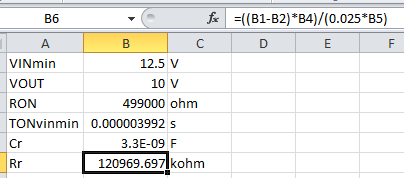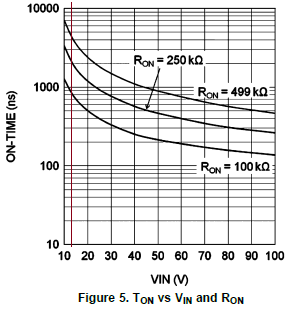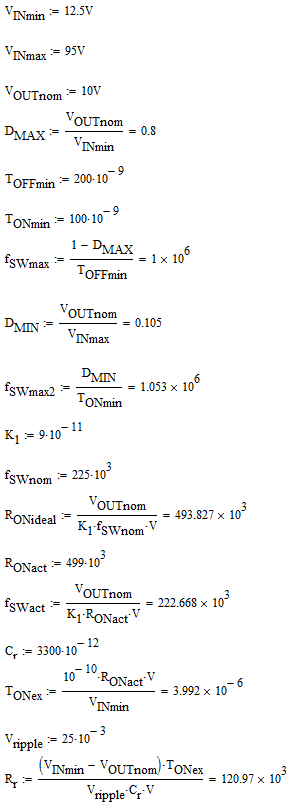Hello,
I'm working on an LM5017 design, and I wanted to verify my understanding of the datasheet calculations.
Equation 16 in the first application example (page 17) states that the maximum ripple resistor is calculated to be 57.6 kohm. However, when using the values provided earlier in the example, I come up with 121 kohm:
When using the LM5017-QUICKSTART-CALC and the application example's conditions (VINmin = 12.5V), I get 134.99 kohm, but I can't see the equation for the locked cell (F53), so I'm not sure how that is being generated either.
Can you help me understand where 57.6 kohm in the datasheet comes from, how the quickstart calculator comes out to 135 kohm, and which one is right?
Thanks,
Jonathan





